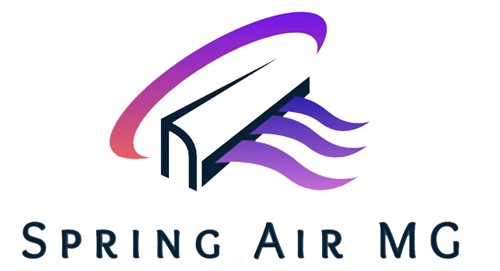Arlington homeowners face real IAQ challenges from seasonal pollen, humidity, and renovation dust. When buildup collects inside supply and return lines, it can cycle particles through rooms, strain your HVAC, and raise bills. Here is a clear guide to local pricing, benefits, and what happens on service day. No tables, just straight answers.
Typical Costs in Arlington, VA
Pricing depends on home size, register count, contamination level, and access. Common ranges:
- Condo or small apartment up to 1,200 sq ft: 300–450 dollars
- Townhouse 1,200–2,000 sq ft: 400–650 dollars
- Single-family home 2,000–3,000 sq ft: 500–800 dollars
- Large home 3,000+ sq ft: 700–1,100 dollars and up
Add-ons you might see:
- Dryer vent cleaning: 99–179 dollars
- Blower and coil cleaning: 100–250 dollars
- Antimicrobial treatment when warranted: quoted after inspection
- Duct sealing or minor repairs: quoted after inspection
Pro tip: Be cautious of ultra-low teaser offers like “whole house for 99.” Quality cleaning requires high CFM negative-air machines, proper agitation tools, and trained techs.
Benefits You Will Notice
- Cleaner air and less dust on surfaces
- Easier breathing for allergy and asthma sensitive family members
- Better airflow with fewer hot or cold spots
- Lower energy waste as airflow is restored
- Less strain on the blower and longer HVAC life
- Odor reduction when the system starts
What To Expect During Professional Cleaning
- Arrival and walkthrough to confirm vent counts, access, and concerns
- System inspection of duct materials, blower compartment, coil housing, and return box with photos when available
- Containment and negative pressure using a HEPA filtered vacuum connected to trunk lines while registers are covered
- Mechanical agitation with rotary brushes and air whips so debris is lifted and captured under negative pressure
- Component cleaning of the blower compartment and return box, with coil cleaning when needed
- Optional treatment with an EPA registered product if there is a moisture history or verified microbial growth
- Verification and cleanup with visual checks, reinstalled registers, and a tidy workspace
How long it takes: most condos and townhomes take about 2–3 hours. Many single-family homes take 3–4 hours. Larger or heavily contaminated systems can take longer.
How Often Should You Clean Your Ducts
Plan on every 3-5 years. Consider every 2-3 years if you have shedding pets, a fireplace, frequent renovations, a moisture history, or strong allergy concerns. Schedule sooner if you notice visible dust at vents, recurring musty odors, or uneven airflow.
How To Prepare Your Home
- Clear 3–5 feet around supply and return registers
- Leave a parking spot for equipment access
- Secure pets in a quiet room
- Set thermostats to Off before the crew arrives unless instructed otherwise
- Point out rooms with poor airflow so the team can prioritize those lines
Choosing the Right Company
- Ask how they create negative pressure and which agitation tools they use
- Confirm both supply and return sides are cleaned, not just the grilles
- Request before and after photos
- Check experience with your duct type such as flex or lined duct
- Look for clear, written estimates and local references
Frequently Asked Questions
Is chemical sanitizer required
Not for routine cleanings. Mechanical removal under negative pressure is primary. Sanitizers are reserved for confirmed microbial issues and should be EPA registered.
Will cleaning damage my ducts
Not when done correctly. Pros match tools to rigid or flexible duct types and avoid aggressive methods on delicate lines.
Will cleaning fix all odors and dust problems
It helps a lot, but source control matters. Consider better filtration, humidity control in the 40–50 percent range, and regular coil and drain maintenance.
Can I do this with a shop vacuum
No. Consumer vacuums lack airflow and filtration to clean an entire system and can push debris deeper or damage flex ducts.
Arlington Focused Tips
- Schedule just after heavy spring pollen or fall leaf debris for a fresh start
- If you bought a recently renovated home, request post-construction cleaning since drywall dust lingers inside returns
- Consider a MERV-11 to MERV-13 filter after cleaning if your system supports it to keep ducts cleaner longer
